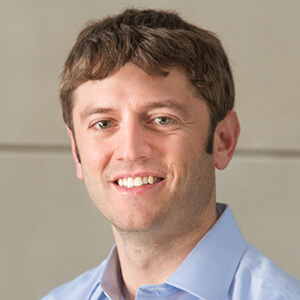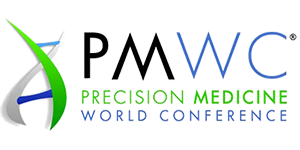Q&A: Aris Baras
Regeneron Genetics Center
Q: What were the motivations to create the Regeneron Genetics Center?
A: Human genetics is one of the most powerful approaches available in drug discovery and development today. One of the biggest bottlenecks remaining in drug discovery is the identification of well-validated targets. Drugs developed with human genetics evidence, supporting the selected target, have historically had substantially higher success rates. At a time where the entire industry is competing over many of the same targets and where few have human genetics validation, the ability to identify and validate novel targets for important diseases is a must-have capability and one that can be unlocked by human genetics.
Regeneron has a long history in genetics-based science and has delivered new medicines to patients that were developed based on human genetics discoveries. The RGC is a natural extension of the decades long commitment to genetics at Regeneron. Aided by unprecedented technology advances,we’ve turned our lofty goal of sequencing hundreds of thousands of individuals for the first time into a reality, enabling us to pursue rare genetic mutations that shine a light on actionable targets and pathways. The RGC has been successfully applying large-scale human genetics to discover new drug targets, validate existing development programs and identify pharmacogenetic markers. We have collaborated with over 35 institutions around the world representing some of the most valuable cohorts for genetic discovery and DNA samples from over 500,000 participants.
Q: Why is it a good time to invest in large initiatives in human genetics research?
A: There has never been a better time to invest in large initiatives in human genetics research. The successes of the first era of the human genome revolution created a great foundation for today’s discoveries. Technology development has enabled unprecedented scale and the ability to link genomic data to high quality clinical data. The current era of genomic discovery has tremendous potential and will fuel the next wave of great scientific and medical advances.
Q: You have formed a very unique relationship between the RGC and Geisinger Health System (GHS). How did this come about? What are the goals and benefits to each collaborator?
A: Geisinger has been a terrific partner and a cornerstone of our genetics program at Regeneron. They pioneered the innovative use of electronic health records, biobanking, and genomic medicine, making them the ideal partner for a large-scale genomics initiative. The relationship brings together two like-minded organizations focused on making genomic data medically actionable and translating genetic discoveries into improved patient outcomes.
At the time, it might have been considered somewhat of an unconventional partnership between a health provider organization and a biotech partner, but what initially brought us together was a shared vision and aspiration to implement genomics at an unprecedented scale and in a transformative way. When the partnership was first imagined, the goal was to sequence at least 100,000 individuals and that in the near future everyone (several million people) at Geisinger would have the opportunity to join the study.
Through our shared mission, the collaboration has allowed Geisinger to improve individualized patient care by having qualified providers and genetic counselors validate and return medically actionable information to patients. Meanwhile, the RGC has been able to create a robust database from which to analyze genomic data, making meaningful associations between genes and diseases, ultimately leading to new drug targets and the ability to help guide the development of our therapeutics.
Q: The RGC/GHS collaboration is one of the largest US population study that includes the sequencing and analysis of genetic material and comparison to long-term health outcome. What will happen with the generated data, will some of it be shared with the community or will it exclusively stay within the RGC and GHS collaboration?
A: The RGC and Geisinger have published many findings in peer-reviewed journals, scientific and medical conferences, and are committed to sharing findings with the scientific community. Further, as part of a recent study published inScience, Geisinger and RGC have publicly released allele frequencies from the first 50,000 sequenced participants. In the long-term, the anticipated benefit is of course the improvement of patient outcomes and the potential development of new and improved medicines based on the early research findings that we are seeing today.
Q: Have you started to leverage some of the data you have generated and identified new potential and interesting variants or new drug target(s)?
A: The RGC has been wildly successful for Regeneron delivering results and discoveries that advance our science and drug development pipeline. We have fully integrated human genetics into every function and in the evaluation of every target and therapeutic. It has become an essential component of how we conduct our everyday R&D activities. We have advanced dozens of genes from our genetics discoveries into early stages of research and target evaluation. We have identified numerous targets in many diseases, including chronic liver diseases, diabetes, heart failure, depression, asthma and COPD.
We also ask questions about existing targets and development programs, enabling us to provide important new insights guiding our development strategy. For instance, we recently reported that we have identified loss of function mutations in the ANGPTL3 gene (the target of one of our late stage antibodies) that confer protection from coronary heart disease. Similarly, a recent publication of ours highlighted the discovery that inactivating mutations of the ANGPTL4 gene are associated with a significantly reduced risk of coronary heart disease; these same mutations also reduce the risk of diabetes. Many of our findings are already being used to inform Regeneron’s R&D programs, with the ultimate goal of developing treatments for patients in need. There’s much more to come.
Q: Where do you see the biggest challenges in extracting valuable knowledge from large genetics research initiatives? Do you believe it is related to the input sample size, the analytical methodologies applied, the computational requirements when processing the data, or else?
A: Challenges and opportunities present themselves in all of these areas with large-scale genetics initiatives. One of the major challenges is securing high quality phenotypic data, which is paramount in understanding the effects of genetic mutations on disease. Further, large sample sizes are needed to detect and replicate these effects for rare genetic mutations, where many of the most informative genetic mutations occur. There are significant informatics and computational challenges related to handling and analyzing large datasets as well as interpreting many of the millions of genetic mutations that we observe. Advances in these fields will be critical to unlock future genomic discoveries. Perhaps most importantly, we believe that these genetics initiatives must be fully integrated with capabilities for biological and clinical validation to truly extend genetics research discoveries into translational opportunities that impact patients and human health.
Session Chair Profile
Biography
Dr. Baras serves as Vice President, Regeneron Pharmaceuticals and Head of the Regeneron Genetics Center (RGC), one of the largest human genetics programs in the world, spanning large-scale sequencing, informatics, and translational sciences using human genetics to advance and guide the development of Regeneron’s pipeline of important new medicines. He has established and leads several foundational genomics collaborations, such as with the Geisinger Health System to sequence at least 250,000 participants and with the UK Biobank to sequence 500,000 participants. The RGC has produced many high impact discoveries identifying new drug targets (such as HSD17B13 in chronic liver diseases), validating existing development programs (Regeneron’s evinacumab program targeting ANGPTL3, REGN3500 targeting IL33, and many more), and contributing important new gene discoveries and precision medicine strategies. The RGC has sequenced more than 300,000 individuals to date, collaborating with more than 60 institutions around the world, and plans to sequence the genomes of millions of participants across its studies. Previously, Dr. Baras held roles and responsibilities at Regeneron across R&D and business development. Prior to Regeneron, Dr. Baras contributed to other biotechnology ventures and conducted research spanning antibody based therapeutics, cancer research, and nanotechnology applications in drug development. Dr. Baras received his Bachelor’s of Science, M.D., and M.B.A., all from Duke University.




